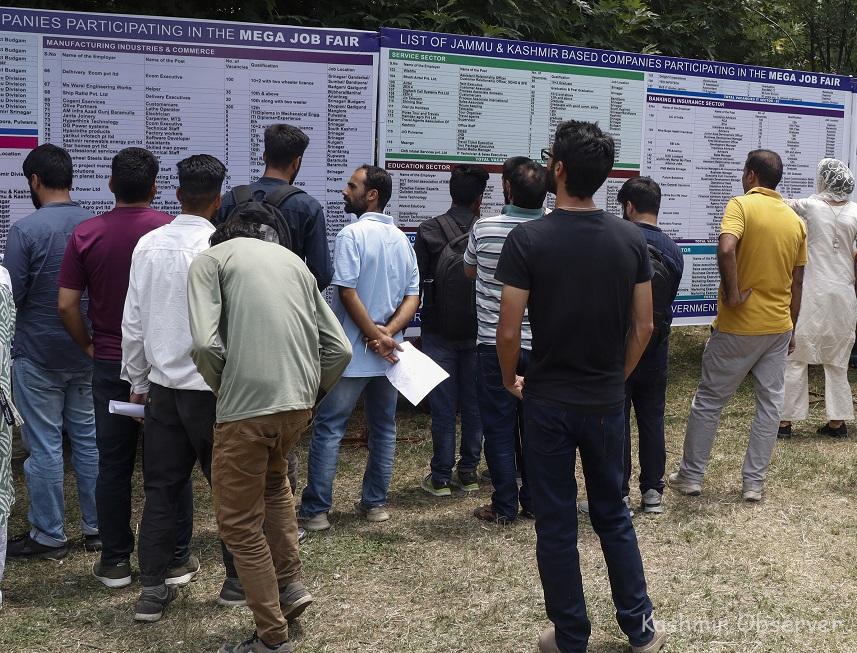Article 370 Fallout: Theft Surge & Drug Crisis Grip Jammu & Kashmir | Regional Analysis
By: Javid Amin | Srinagar | 28 June 2025
A Constitutional Quake, Regional Aftershocks
The revocation of Article 370 on August 5, 2019, promised unity and development for Jammu & Kashmir. Five years later, a starkly different narrative unfolds in the region’s alleyways and homes. Jammu grapples with a 42% spike in property thefts (J&K Police Annual Report, 2023), while Kashmir battles a heroin epidemic infecting 1 in 10 youth (IMHANS Kashmir Study, 2023). This isn’t just crime; it’s the social cost of a seismic constitutional shift, fracturing communities and empowering criminals in both regions.
The Guarded Era – Pre-370 Realities in Two Realms
-
Jammu’s Ordered Existence:
-
Demographic Shield: Land laws preserved a 94% local population (2011 Census). Tight-knit mohallas enabled neighborly vigilance.
-
Controlled Crime: Petty thefts (<600/yr in Jammu City) were localized. Drugs were primarily transit contraband, not a local scourge.
-
Policing Advantage: Beat officers knew every family. Tenant verification under the J&K Rent Control Act was stringent.
-
-
Kashmir’s Contained, Yet Stressed, Ecosystem:
-
Insulation & Isolation: Restrictions limited outsider influx but bred economic stagnation. Militancy overshadowed conventional crime.
-
Drugs: A Latent Threat: Limited cannabis use existed, but heroin was rare. Social stigma and family pressure acted as deterrents.
-
Conflict-Centric Policing: Security forces focused on counter-insurgency, with less bandwidth for community policing or narcotics interdiction.
-
The Great Unlocking – Post-370 Shockwaves
-
Jammu: The Floodgates Open:
-
Population Surge: 22% non-local influx (2020-2023) – laborers (UP, Bihar), traders (Punjab, Rajasthan).
-
Real Estate Chaos: Land prices skyrocketed (300% in Satwari). Local renters displaced; tenant laws collapsed under central statutes.
-
Neighborhood Fragmentation: Traditional mohallas dissolved (e.g., Bakshi Nagar’s 70% tenant turnover shattered community watch).
-
-
Kashmir: Security Vacuum & Economic Anxiety:
-
Communication Blackout Fallout: Crippled businesses, job losses, and psychological trauma created fertile ground for despair.
-
Policing Paradigm Shift: Initial focus remained on maintaining order post-abrogation, diverting resources from community engagement.
-
Erosion of Informal Controls: Prolonged curfews and uncertainty weakened family and community structures that policed social behavior.
-
Jammu’s Plague – The Theft Epidemic
-
New Age Bandits:
-
Daylight Raiders: 68% of thefts occur 9 AM-4 PM targeting working families (Police FIRs, 2023).
-
Hot Commodities: Gas cylinders, motorbikes, smartphones – easy to resell via inter-state networks.
-
Transient Networks: Bihari & UP-based gangs rent rooms, execute quick heists, vanish. 78% of 2023 theft accused lacked local roots.
-
-
Policing Paralysis:
-
Jurisdictional Whiplash: Confusion between old J&K codes and IPC delayed investigations.
-
Resource Crunch: 1 officer per 1,450 citizens (vs. national avg. 1/786). Only 2 forensic vans for entire Jammu province.
-
Tenant Verification Failure: No effective digital system; landlords avoid police involvement.
-
Kashmir’s Shadow Pandemic – The Drug Tsunami
-
From Transit Route to Consumption Hub:
-
“Chitta” Flood: Heroin seizures up 320% since 2019 (NCB Data). 1 in 10 males aged 15-25 addicted (IMHANS).
-
Supply Chain Entrenched: Punjab cartels exploit porous routes (Uri, Kupwara). “Pharma Mafia” diverts opioids (Tramadol, Spasmo-Proxyvon).
-
Victims Young & Vulnerable: Schoolchildren (as young as 12) in Srinagar, Anantnag, Baramulla; daughters of conflict-affected families.
-
-
Roots of Despair:
-
Conflict Trauma: Generational exposure to violence normalizes escapism.
-
Economic Desolation: Tourism collapse, limited private sector, 32% youth unemployment (J&K Economic Survey 2023-24).
-
Digital Glamorization: Social media glorifies drug use; encrypted apps facilitate dealing.
-
Nexus Concerns: Security agencies probe links between drug profits and residual militant financing.
-
Governance on the Backfoot – A System Overwhelmed
-
Jammu Police:
-
Stretched Thin: Diverted for VIP security, law & order. Beat policing reduced by 65%.
-
Tech Deficit: Lack of automated license plate readers, limited CCTV integration, poor cyber-tracing for stolen goods.
-
Public Trust Erosion: Slow response times (“3+ hours common,” Janipur RWA complaint).
-
-
Kashmir Police & Security Apparatus:
-
Dual Mandate Crunch: Balancing counter-terrorism (still active) with surging narcotics and community policing.
-
Rehabilitation Void: Only 4 functional de-addiction centers for the Valley (vs. estimated need for 20+).
-
Community Bridge Broken: Fear and mistrust hinder intelligence gathering on drug networks.
-
Fractured Societies – The Human Cost
-
Jammu: From Community to Crowd:
-
Lost neighborly trust breeds isolation and fear.
-
Elderly feel vulnerable; families install multiple locks/gates.
-
Economic strain from replacing stolen essentials.
-
-
Kashmir: Hope Eclipsed by Addiction:
-
“Lost Generation” fear: Educated youth succumbing to heroin.
-
Family shame silencing victims, hindering treatment.
-
Mental health crisis: Depression, anxiety skyrocket alongside addiction.
-
Rebuilding the Ramparts – Region-Specific Solutions
For Jammu:
-
Digital Fortress: Mandatory Aadhaar-linked tenant registry with real-time police access. Fast-track courts for property crimes.
-
Neighborhood Watch 2.0: Tech-enabled community policing apps with panic buttons, anonymous tipping. Revive Mohalla Committees with funding.
-
Infrastructure Boost: Dedicated theft investigation units, modern forensic labs, integrated CCTV networks.
For Kashmir:
-
War on Drugs 2.0: Special Narcotics Task Force (JKP+NCB+NIA+Army intelligence). Crackdown on pharma mafias. Drone surveillance on routes.
-
Healing the Valley: Massive expansion of de-addiction centers (1 per district) with counseling, vocational training. School-based prevention programs.
-
Economic Lifelines: Accelerated job creation in tourism, IT, handicrafts. Safe spaces for youth engagement.
For Both:
-
Trauma-Informed Policing: Train officers in mental health first response, victim sensitivity.
-
Central Support: Enhanced CAPF deployment for crime control, freeing JKP for community work.
-
Data-Driven Policy: Real-time crime mapping to allocate resources dynamically.
-
Land Law Nuance: Balance investment with protections for local identity and resources.
Bottom-Line: Integration’s Unfinished Symphony
The abrogation of Article 370 sought to integrate Jammu and Kashmir into India’s constitutional mainstream. Yet, as SSP Jammu Chandan Kohli and Srinagar-based sociologist Dr. Ayesha Khan jointly observe, “Integration without social preservation breeds vulnerability. We opened doors to opportunity, but failed to lock them against predators.”
The theft epidemic in Jammu and the drug catastrophe in Kashmir are symptoms of a deeper ailment: the rupture of social trust and the lag of governance in adapting to unprecedented change. True integration requires more than legal uniformity; it demands:
-
Recognizing the regional nuances of the crisis.
-
Investing relentlessly in social infrastructure – policing, rehab, mental health, jobs.
-
Empowering communities as the first line of defense and recovery.
-
Pursuing security not just from militancy, but from the despair and lawlessness eroding society from within.
The promise of a “Naya Jammu and Kashmir” remains. Fulfilling it requires honestly confronting these unintended consequences and rebuilding, street by street and soul by soul, with the same determination used to redraw the constitutional map. The resilience of the people deserves nothing less.



